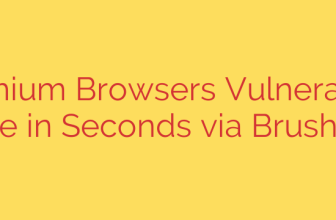
Protecting your website and its visitors is crucial, especially when using popular platforms like WordPress. Unfortunately, cyber threats are always evolving. A recent discovery involves a malicious WordPress plugin that poses a serious risk by displaying fake Java update popups to unsuspecting visitors.
This particular threat operates by integrating harmful code directly into your website. When someone visits an affected site, they are confronted with a deceptive popup window claiming a necessary Java update is available. These popups are not legitimate system notifications. Instead, they are designed to trick users into clicking and downloading what they believe is an update, but is actually dangerous malware. This can lead to visitors installing viruses, spyware, or other unwanted software onto their computers, potentially compromising their personal data.
The plugin responsible is often a trojaned version of a seemingly harmless or even legitimate plugin, or it might be distributed through unofficial or compromised sources. Once installed and activated, it quietly works in the background, injecting the malicious script that generates the fake update alerts. This type of attack is known as malvertising or a drive-by download attempt, leveraging social engineering to exploit user trust.
The consequences for a website owner are significant. Beyond harming visitors, the presence of such malware can damage your website’s reputation, lead to lower search engine rankings (as search engines penalize sites hosting malicious content), and potentially result in your site being blocked by browsers.
Identifying this malicious plugin can be tricky as it might not appear obviously harmful in the WordPress dashboard. However, common signs include visitors reporting persistent or unusual popups asking for Java updates, or security scans flagging malicious scripts on your site.
If you suspect your site is affected, immediate action is necessary. You should carefully review your list of installed WordPress plugins, especially any recently added ones or those obtained from unofficial sources. Deactivating and deleting suspect plugins is a critical first step. Further investigation might involve scanning your website files for injected code and potentially restoring your site from a clean backup. Ensuring all your themes and plugins are updated from trusted sources and using a reputable security plugin for monitoring are essential preventative measures.
Staying informed about the latest WordPress security threats and practicing safe plugin management are vital steps in protecting your online presence and ensuring a safe experience for your audience. Don’t let a malicious plugin compromise your hard work and your visitors’ safety. Proactive website security is your best defense.
Source: https://blog.sucuri.net/2025/05/fake-java-update-popup-found-in-malicious-wordpress-plugin.html








